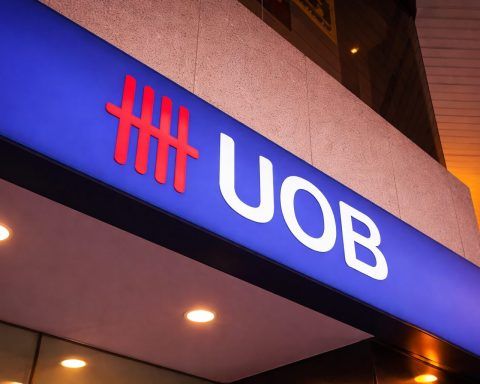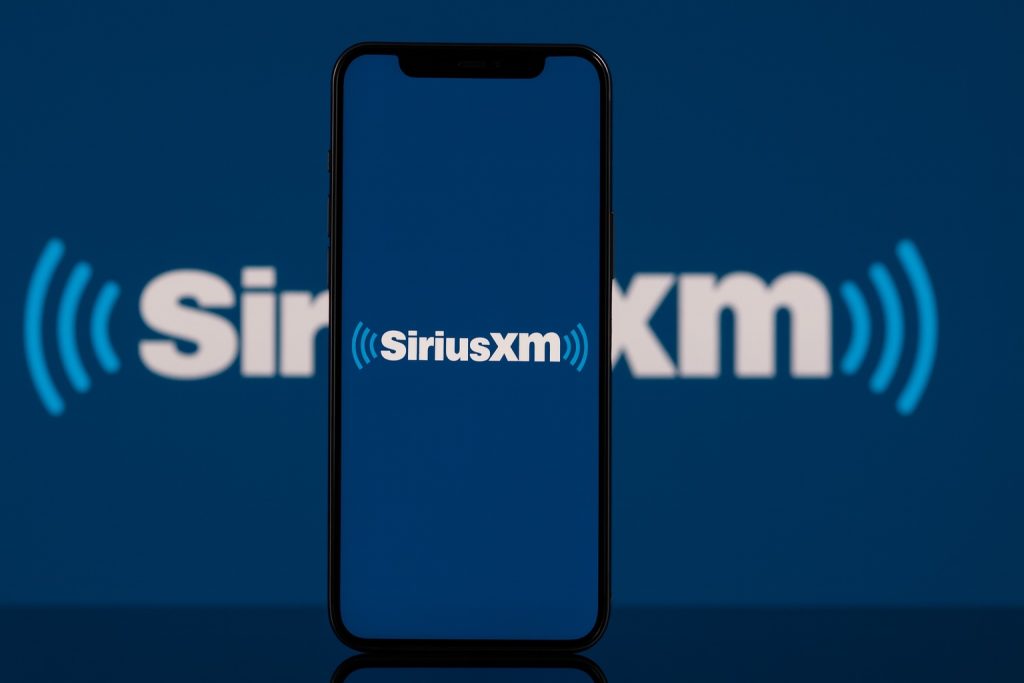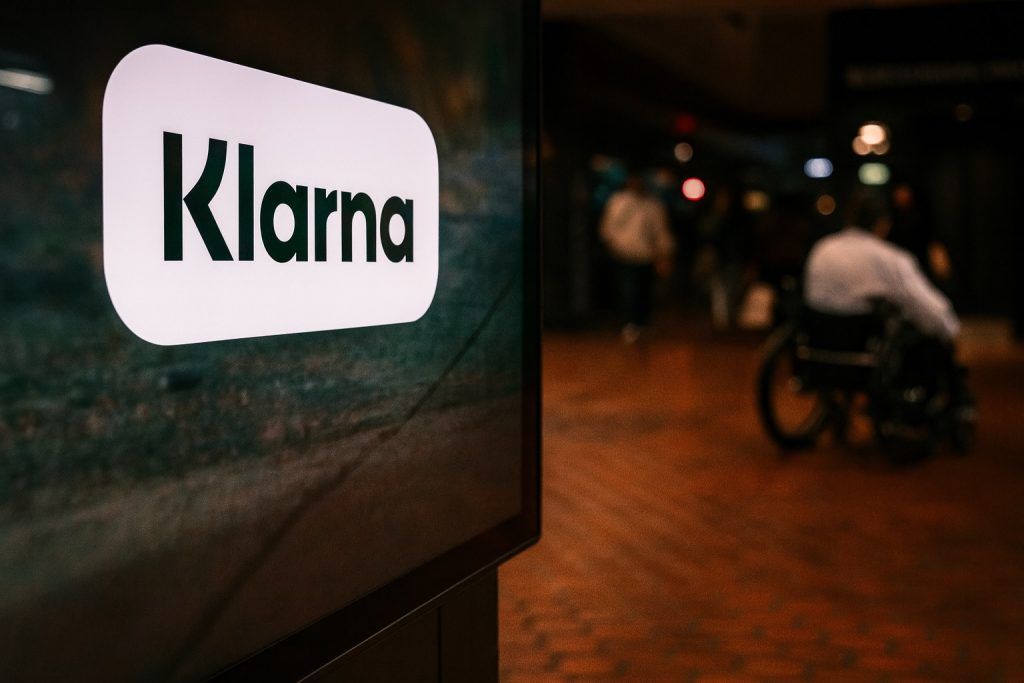- Stocks Near Records: Last week all three major U.S. indexes closed higher. The Dow hovered around 46,200 points and briefly topped 46,500, while the S&P 500 sat about 6,664 [1] [2]. The Nasdaq Composite (~22,680) is also within striking distance of its record. These gains were powered by strong third-quarter earnings – roughly 58% of S&P 500 companies beat estimates – and hopes the Federal Reserve will soon start cutting rates [3] [4].
- Earnings and AI Rally: A robust earnings season (banks, tech) underpins the rally. Wall Street now sees S&P 500 EPS growth of ~9% year-over-year for Q3 [5] [6], up from ~8.8% a month ago. Tech and “AI” stocks remain market leaders: Nvidia, AMD and others are near record highs as investors chase the AI boom [7]. Even so, some froth is evident: S&P 500 trades at about 23x forward earnings – its priciest level in five years [8].
- Fed and Data: With a U.S. government shutdown persisting, fresh economic data are scarce. Key reports (jobs, inflation, retail sales) are delayed, leaving markets to hang on Fed signals [9] [10]. Investors overwhelmingly expect the Fed to cut rates by 25 basis points at its Oct. 28–29 meeting (fed futures imply ~95% odds [11]). Fed officials like Governors Waller and Miran have already signaled dovish tilt due to a weakening labor market [12] [13].
- Trade and Global Cues: Trade tensions have eased. President Trump backpedaled on a proposed 100% China tariff this week, saying it “would not be sustainable,” which relieved a recent sell-off [14] [15]. Asian markets rallied Monday: Japan’s Nikkei jumped ~2.8% on a pro-stimulus election outcome, and China’s GDP grew 4.8% (q/q annualized) – beating estimates despite being the slowest pace in a year [16] [17]. Trump even floated cutting some tariffs if Beijing “does things for us,” fueling hopes of a U.S.–China deal.
- Inflation and Safe Havens: Inflation fears have cooled slightly. Gold briefly hit a record ~$4,300/oz mid-week as a haven, but has since dipped back to ~$4,230 [18]. Oil prices also eased (U.S. crude ~$57–58, Brent ~$61/barrel) [19], which tempers input-cost pressures. The 10-year Treasury yield is around 4.0%, down from last month’s peak, reflecting expectations of Fed easing [20].
Markets Rebound after Volatile Week
After a volatile stretch, markets have resumed their uptrend. On Friday Oct. 17 the S&P 500 closed at 6,664.01 and the Dow at 46,190.61 – both near record highs [21]. “Late-day buying pushed [the S&P and Dow] into record range”, Reuters reported [22]. Even amid sharp swings, each dip attracted buyers, leaving the Nasdaq, S&P and Dow up about 15–17% for 2025 so far [23].
Much of the resilience stems from corporate results. With ~58% of S&P companies out with Q3 reports, an unusually high 86% of them beat earnings forecasts [24]. Banks and tech have led the charge. JPMorgan and peers delivered stronger-than-expected profits, and tech giants continue to ride the AI wave. Nvidia and other chipmakers hit new highs after unveiling major AI deals [25]. TipRanks notes that “major earnings reports” (Netflix, Tesla, Coca-Cola, AT&T, Intel, Ford, etc.) are ahead this week [26], and any misses or surprises will be closely watched.
Yet even as markets rally, many analysts caution the party could be fragile. “I do get a little bit more nervous just about the straight upward momentum,” said Anthony Saglimbene, chief market strategist at Ameriprise. At the current record levels, “any kind of unexpected hiccup could cause a near-term dislocation,” he warned [27]. In other words, investors recognize that with stocks near all-time highs, the room for upside is balanced by risks. TS2 adds that analysts describe the mood as “cautiously optimistic” – confident in the fundamentals (earnings beats, Fed easing) but aware that markets are “not out of the woods” yet [28].
Credit Worries and Trade Tensions
Two of the biggest recent market shocks have been regional banking issues and U.S.–China trade. This week’s quarterly results offered relief. Zions Bancorp and Western Alliance, which had reported large loan losses, saw their shares snap back after investors deemed the problems “more bark than bite,” as Argent Capital’s Jed Ellerbroek put it [29]. Zions actually rebounded 5.8% on Friday after Thursday’s plunge. “Looking through all the big banks’ results, credit is very good,” Ellerbroek observed [30]. Even the KBW regional bank index rose 1.8% Friday after a 5% decline the day before [31].
Meanwhile, President Trump’s rhetoric on China took a softer turn, calming trade jitters. After last week’s shock announcement of 100% tariffs on Chinese goods, he told reporters that such a rate “would not be sustainable” and blamed Beijing for stalled talks [32]. He also signaled willingness to ease tariffs if China meets U.S. demands. The turnaround “helped lift the market mood,” noted Ryan Detrick of Carson Group [33]. “We’ve seen this movie before,” Detrick quipped, referring to past trade-war scares. With Trump putting “water on that fire,” the Nasdaq recovered from its mid-week swoon [34]. As TipRanks reports, investors are now betting on progress in U.S.–China talks heading into late October [35] [36].
At the same time, other global factors provided a backdrop for stocks. Asian markets rallied Monday, led by Japan: the Nikkei surged ~2.8% on news of a pro-stimulus coalition [37]. China’s Q3 GDP rose 4.8% (annualized), slightly above forecasts [38], though still its slowest growth in a year. Traders are hoping for new Chinese stimulus. In Europe, stock futures also ticked up as bank credit fears eased and trade optimism spread [39]. Put together, “global sentiment improved” with U.S. futures rising and Asian indices up, buoying Wall Street’s open on Oct. 20 [40] [41].
Fed Cut Looms Amid Economic Soft Patch
The Fed is very much in focus. With official U.S. data stalled by the shutdown, all eyes are on Fed speakers and surveys. Fed Governor Christopher Waller on Oct. 16 urged a 25bp cut at month’s end, citing “worrisome” labor-market weakness [42]. Fed Governor Stephen Miran separately called for even faster easing, noting “new risks” like trade shocks and financial-market strain [43]. Meanwhile, Fed Chair Jerome Powell reiterated that cuts are on the table if jobs keep softening. JPMorgan’s Michael Feroli notes that “Chair Powell has highlighted the importance of signs of a weakening job market… that confirmed widely held expectations that the FOMC will cut rates again” at the Oct. meeting [44].
Indeed, markets were pricing in a 94–95% chance of a quarter-point cut on Oct. 28–29 [45] [46]. This would follow the surprise cut in mid-September, and analysts expect another cut by December (in which case rates would fall to the low-3% range early next year) [47] [48]. The yield on the 2-year Treasury has fallen significantly, reflecting these expected rate cuts, while the 10-year yield hovers near 4.0%.
The Fed faces a delicate balance. On one hand, the Beige Book this week warned that growth is “little changed” and pointed to rising layoffs and softer consumer spending [49]. Several regional Fed surveys noted “increased credit stress among smaller banks” and a hesitant consumer coping with tariff-driven price pressures [50] [51]. Even some banks have described a “middle-class recession” in parts of the country [52]. On the other hand, inflation – while still above target – has eased from summer highs. Fed officials will likely focus on labor-market data (weekly claims, payrolls) and the Sept. CPI report (due Oct. 24) to decide on further cuts.
Warning Signs: Cautions from IMF and Strategists
Despite the upbeat rally, many experts are flashing warning signs. The IMF in mid-October cautioned that markets are “too comfortable with risks” [53]. Its Global Financial Stability Report noted that “valuation models indicate that risk asset prices are well above fundamentals”, making “disorderly corrections when adverse shocks occur” more likely [54]. In plain language, the IMF warns of a bubble: stocks are high, concentrations (in AI megacaps) are extreme, and investor complacency is dangerous.
Within Wall Street, strategists echo this concern. The CBOE Volatility Index (VIX) spiked toward 29 last week – its highest level in roughly six months [55] – as traders reacted to each headline. “There’s definitely worry that we’re too extended,” says Manulife’s veteran strategist Mark Hackett. Jamie Dimon of JPMorgan also recently warned of a “heightened risk” of a sharp correction within six months (a sentiment echoed by Bank of America’s top strategist).
A few specific red flags:
- High Inflation/Pending Tariffs: Fed officials note inflation isn’t fully tamed. Futures markets still price more cuts than some policymakers want. If Trump’s tariffs bite into consumer prices more than expected, “the dovish Fed support maybe goes away,” warns Allen Bond of Jensen Investment [56].
- Consumer Fatigue: The risk that U.S. consumers slow down looms large. As Schroders’ Adam Farstrup puts it, “A deterioration in the U.S. consumer” – the engine of 2/3 of GDP – would be a top market risk [57]. So far retail sales and jobs data have been patchy.
- Valuations: At 23x forward earnings, U.S. stocks are on a 5-year high valuation multiple [58]. Combined with historically low volatility and high debt levels, this amplifies the impact of any shock.
- Earnings Expectations: Analysts have already raised their Q3 earnings growth forecast (from +8.0% in July to ~+8.8%–9.3%). If companies fail to deliver on this lofty bar, it could trigger a reassessment.
On the bright side, many of these concerns are potential rather than realized. As JP Morgan’s Feroli notes, futures markets expect further Fed cuts, underpinning bonds and equities alike [59]. And strong tech/AI trends continue to attract capital. But given the speed of 2025’s rally (the S&P is up ~14% YTD), investors are becoming more vigilant. “There’s just a lot of back-and-forth comments with regards to China and trade tariffs… and pretty much everything else,” quipped Robert Pavlik of Dakota Wealth, on the challenge of digesting conflicting headlines [60].
Outlook and Strategy
For now, the bulls have the upper hand. U.S. stock futures pointed higher on Oct. 20 after Friday’s gains, with S&P 500 futures ~0.5% up and Dow futures ~0.3% up early Monday [61]. Many firms advise staying invested but cautious. Car safety always, acceleration slow – industry analysts say. The coming week’s focus will be on earnings from Netflix (Oct. 21) and Tesla (Oct. 22) – tech bellwethers – and on the Sept. CPI on Oct. 24. These could move markets sharply: big beats would reinforce optimism, while any surprises (for example, a big jump in core inflation or a Tesla miss) could spark a pullback.
Strategists suggest using rallies to manage risk. If stocks pause or dip, some see it as a buying opportunity given solid corporate fundamentals. “Investors have reasons to be nervous,” notes MarketWatch, but also “good reasons to separate warning signs from background noise.” Leading indicators like credit spreads, small-cap stocks, and earnings momentum are being watched for cracks.
Forecasts: At this writing, consensus is for continued gains but with heightened volatility. Some forecasters see S&P 500 reaching the 7,000–7,100 range by year-end if earnings remain strong and Fed follows through on rate cuts. Others warn of a 10–15% correction as a normal re-test of trend. In any case, most agree the market is at a crossroads: supported by easier policy and healthy earnings, yet vulnerable to geopolitical flare-ups or data disappointments.
Bottom Line: Wall Street enters this week in rally mode – all-time highs in sight – but with nerves on edge. From the trading floors to the Fed bench, the message is: “Stay alert.” As Goldman’s analysts put it, this market may keep climbing on optimism and AI hype, but it’s “not out of the woods”. Investors will be watching every cue – from Treasury yields to Tesla results – for clues on whether the bull run can continue or a course correction is overdue.
Sources: News and analysis from Reuters, TS2.tech, MarketWatch and other financial outlets [62] [63] [64] [65] [66] [67] [68] [69], among others. These include expert quotes and data on market performance, Fed outlook, trade developments, and macro risks.
References
1. ts2.tech, 2. ts2.tech, 3. ts2.tech, 4. www.reuters.com, 5. ts2.tech, 6. www.reuters.com, 7. ts2.tech, 8. www.reuters.com, 9. ts2.tech, 10. www.reuters.com, 11. ts2.tech, 12. www.reuters.com, 13. www.reuters.com, 14. www.reuters.com, 15. ts2.tech, 16. www.reuters.com, 17. www.tipranks.com, 18. ts2.tech, 19. ts2.tech, 20. ts2.tech, 21. ts2.tech, 22. ts2.tech, 23. ts2.tech, 24. ts2.tech, 25. ts2.tech, 26. www.tipranks.com, 27. www.reuters.com, 28. ts2.tech, 29. www.reuters.com, 30. www.reuters.com, 31. www.reuters.com, 32. www.reuters.com, 33. ts2.tech, 34. ts2.tech, 35. www.tipranks.com, 36. www.tipranks.com, 37. www.reuters.com, 38. www.reuters.com, 39. www.tipranks.com, 40. www.reuters.com, 41. www.tipranks.com, 42. www.reuters.com, 43. www.reuters.com, 44. www.reuters.com, 45. ts2.tech, 46. www.reuters.com, 47. ts2.tech, 48. www.reuters.com, 49. www.reuters.com, 50. www.reuters.com, 51. www.reuters.com, 52. www.reuters.com, 53. www.reuters.com, 54. www.reuters.com, 55. ts2.tech, 56. www.reuters.com, 57. www.reuters.com, 58. www.reuters.com, 59. www.reuters.com, 60. www.reuters.com, 61. www.tipranks.com, 62. ts2.tech, 63. ts2.tech, 64. www.reuters.com, 65. www.reuters.com, 66. www.reuters.com, 67. www.reuters.com, 68. www.reuters.com, 69. www.tipranks.com








